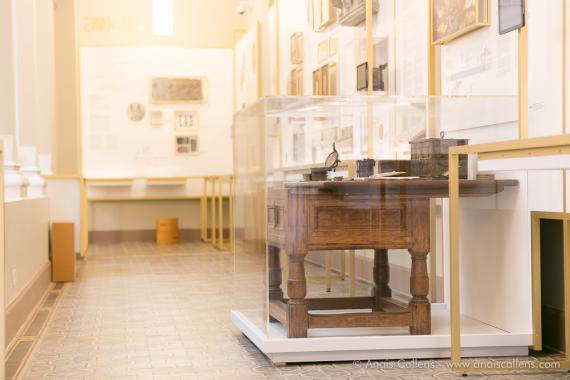A new brochure has arrived in the museum. The flyer offers a guided tour highlighting 15 essential artifacts from our collections. Follow the route and to get more information, scan the QR codes on your smartphone.
Experience the history of money through our timeline, starting with the pre-monetary economy in Mesopotamia right to the introduction of the Euro. After taking a look at the beauiful silver Athenian tetradrachma you can observe the very first European banknote, dating back to 1666. Did you know that Sweden was the first European country that brought paper money into circulation?
People who are more interested in the history of World War II are invited to take a look at the adventures of the A4 patrol boat. This ship was responsible for succesfully transferring part of the National Bank's gold reserve to the United Kingdom. The transport of the other part the gold to France went less smoothly. And don't forget to take a look at the forged British Sterling downstairs. The banknote forms a silent witness of one of history's largest counterfeiting operations executed by Nazy Germany for the sole purpose of destabilizing the British economy.
Take an exotic trip to the island of Yap and the Santa Cruz Archipelago in the middle of the Pacific Ocean. In these tropical places people once used stones and feather money as a means of payment, two more unique forms of commodity money.
Subsequently the museum has a lot to offer for the art enthousiasts. The banknote design created by Xavier Mellery and the model of the headquarters of the National Bank developed by architect Marcel Van Goethem are only two examples of the Museum's large art collection.
The brochure offers you the essence of each object presented in a few words. You want more information on an object? Then scan the QR codes and gain access to a more extensive article.
Would you rather read all this in peace or are you unable to come to the museum? No problem, all the articles are available online in the section "A closer look at our collections."
